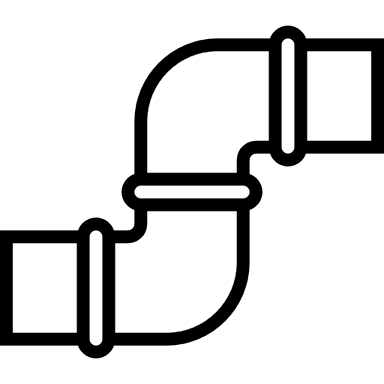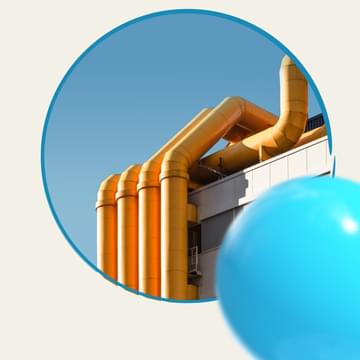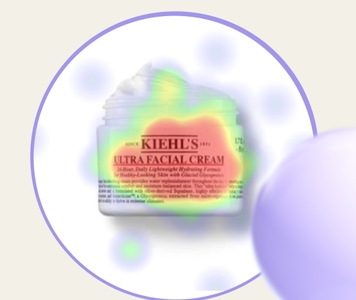An innovation pipeline might sound like a vague term for someone unfamiliar with it. But today, it’s one of the most talked-about processes in business and product development. So we decided to dive a little deeper and explain what innovation pipeline actually means (you can thank us later).
Innovation pipeline definition
An innovation pipeline is a business framework that helps companies achieve their goals by incorporating innovative methods and processes.
Lots of big words here, let’s see what that means by using an example.
Imagine you’re a tech company that produces phones and computers. This is one of the most saturated and competitive industries out there, with competitors releasing new features and functionality what seems like constantly. Therefore, you must always stay on top of changing customer needs and competition to keep pace, delivering something unique and innovative to stay relevant. How do you do that? You build an innovation pipeline.
This pipeline will define the basics of your innovation program: how your team comes up with new product ideas, how you choose which ideas will become prototypes and how you collaborate with your key stakeholders to develop the product concepts.
So, essentially, an innovation pipeline makes your innovation strategy real; it’ll set out how you focus on the real customer problems that need to be solved.
The innovation pipeline in real life
Samsung is an example of a brand that’s adopted an innovation pipeline framework that, well, works. The company has several innovation initiatives and teams that are constantly churning out new ideas and solutions. The 4 divisions are:
Ventures
NEXT Product
Mergers & Acquisitions
Partnerships
Each one of them specializes in certain aspects of product innovation. For instance, the innovation team in NEXT Product consists of designers, product developers and engineers that look for opportunities in AI, blockchain, fintech and other tech spaces. In contrast, the Ventures group searches for startups and early-stage businesses likely to facilitate Samsung’s current capabilities.
The business benefits of setting up an innovation pipeline
If you still think that building out an innovation pipeline is not worth investing your time into, or might be something to worry about in a few years’ time, we’ve identified several reasons you might want to reconsider:
1. You’ll have a set plan of action whenever you need it
If you were to visualize an innovation pipeline, it’d probably look something like this:

Quite expectable, right? As the name suggests, the pipeline is a stage-gate operation, where every little “pipe” stands for a specific phase in the innovation process (e.g., ideation or validation).
Every company’s innovation pipeline will differ depending on its business structure and available resources. But all in all, this innovation framework will help you create order for your innovation efforts.
And you can vary your innovation pipeline for different needs. Are you launching a completely new product in a new category? Or adding an extra product variation (say, flavour)? Or renovating an existing product to better serve your customers? Either way, setting up an innovation pipeline will help you prep for different types of innovation projects in advance.
2. You’ll align stakeholders around a common goal
As you would when laying actual pipes, you need several people to get it done. In this context, these people could be customer experience agents, salespeople, marketers, engineers, product developers, and much more. You’ll be surprised to know how many departments can help contribute to innovation.
Make sure to involve stakeholders at every stage of the decision-making process. Ask them for input at the idea generation stage and consult with them again as you refine those ideas to ensure you’re capturing the initial customer insight their original idea was based on. Not only will you make your team tighter, but you’ll also motivate them to stay tight.
3. You’ll create a product that people actually need
The innovation pipeline changes your mindset. It helps you focus on solving a customer’s problem by delivering something they never thought they needed - some people call that a “job to be done”. We covered the Job-To-Be-Done framework in this article, so be sure to check it out!
Your pipeline stages can include different types of research methods, like social listening, customer journey mapping, focus groups, or rapid testing tools like Upsiide. Whatever direction you go in, you can always refer to the innovation pipeline plan to guide you along the way.
4. You’ll increase your competitive advantage
84% of consumers say it is somewhat or very important that the company they buy from is innovative, according to McKinsey. As a result, customers are actively looking for brands that break the industry standards and do something different.
While some might consider this challenging, we think it’s your opportunity to gain an advantage over competitors. And the innovation pipeline can help you achieve that goal.
A performance supplement brand ADVANCED wanted to create attractive packaging for their new ready-to-drink (RTD) product. They used Upsiide to identify the creative direction, find and refine small design elements and test the final mockups against the competition.
This 3-staged approach became the basis of ADVANCED’s innovation pipeline. They relied on research to improve their ideas and used data to validate their assumptions. As a result, they created unique packaging designs and learned how they could market their product to stay on top of the competitors.
Innovating, one ‘pipe’ at a time
Now that you know what an innovation pipeline is, you’re one step closer to creating your next successful innovation. If you want to learn how to build your first pipeline and fill it with great ideas, be sure to read our thorough step-by-step guide.




